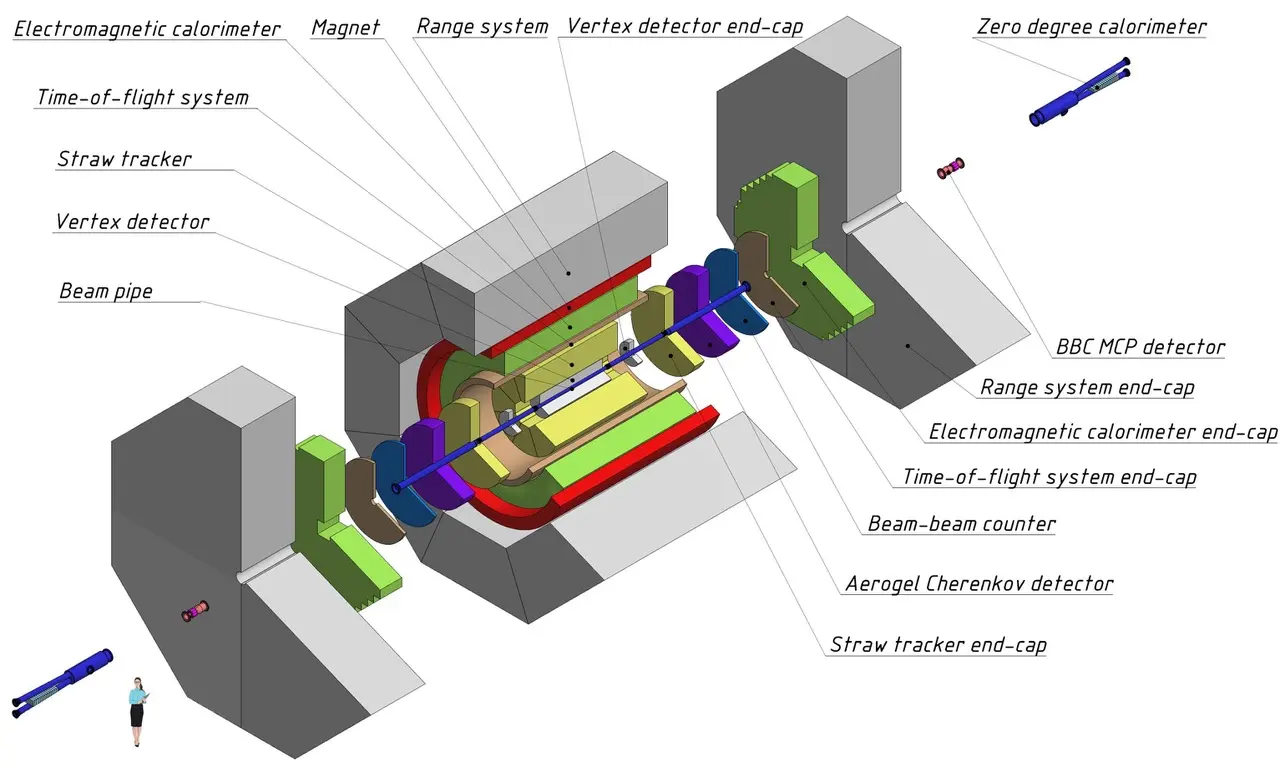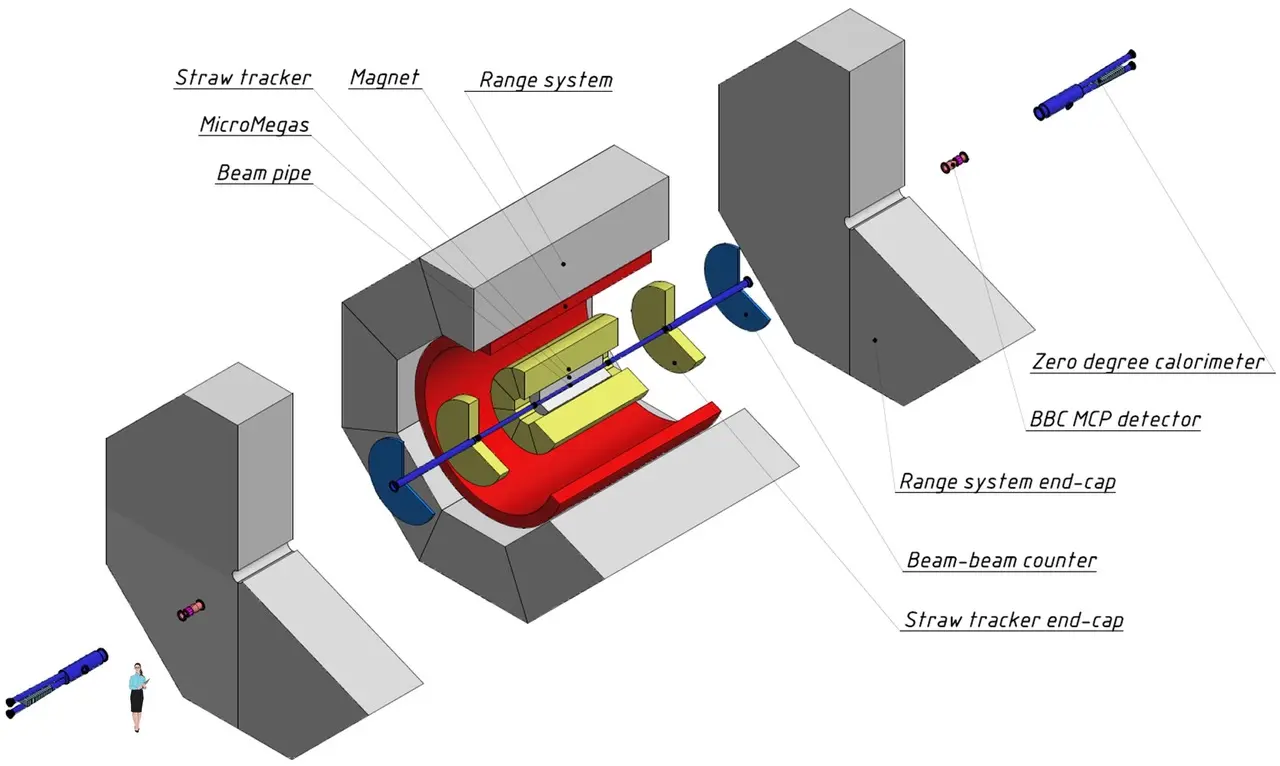Detector

Main configuradtion

First phase
The SPD experimental setup is being designed as a universal 4π detector with advanced tracking and particle identification capabilities based on modern technologies. The silicon vertex detector (VD) will provide resolution for the vertex position on the level of below 100 µm needed for reconstruction of secondary vertices of D-meson decays. The straw tube-based tracking system (ST) placed within a solenoidal magnetic field of up to 1 T at the detector axis should provide the transverse momentum resolution σpT/pT ≈ 2% for a particle momentum of 1 GeV/c. The time-of-flight system (PID) with a time resolution of about 60 ps will provide 3σ π/K and K/p separation of up to about 1.2 GeV/c and 2.2 GeV/c, respectively. Possible use of the aerogel-based Cherenkov detector could extend this range. Detection of photons will be provided by the sampling electromagnetic calorimeter (ECal) with the energy resolution ∼ 5%/√E. To minimize multiple scattering and photon conversion effects for photons, the detector material will be kept to a minimum throughout the internal part of the detector. The muon (range) system (RS) is planned for muon identification. It can also act as a rough hadron calorimeter. The pair of beam-beam counters (BBC) and zero-degree calorimeters will be responsible for the local polarimetry and luminosity control. To minimize possible systematic effects, SPD will be equipped with a triggerless DAQ system. A high collision rate (up to 4 MHz) and a few hundred thousand detector channels pose a significant challenge to the DAQ, online monitoring, offline computing system, and data processing software.
The proposed physics program covers at least 5 years of the SPD running.
 Joint Institute for Nuclear Research
Joint Institute for Nuclear Research